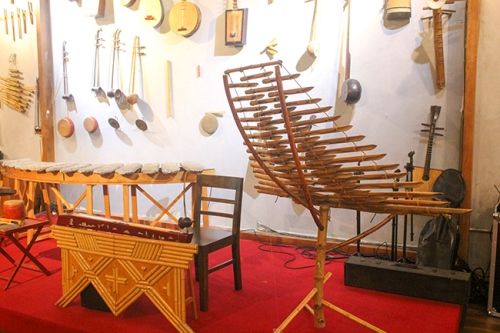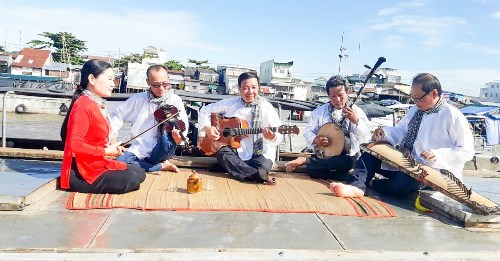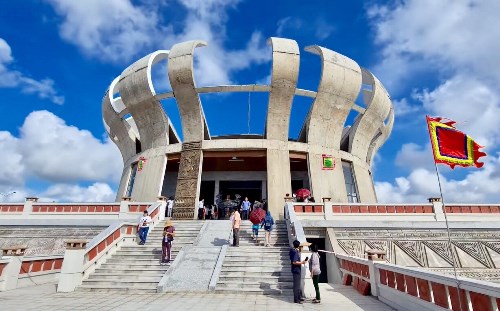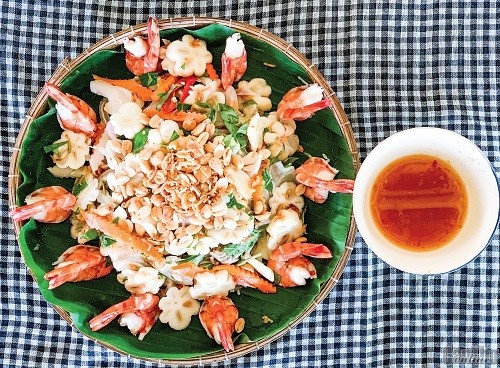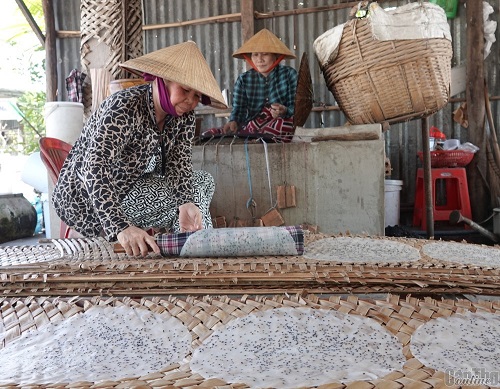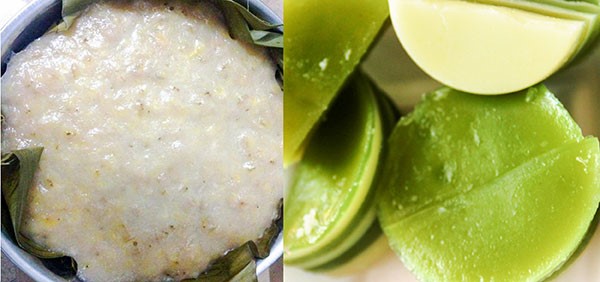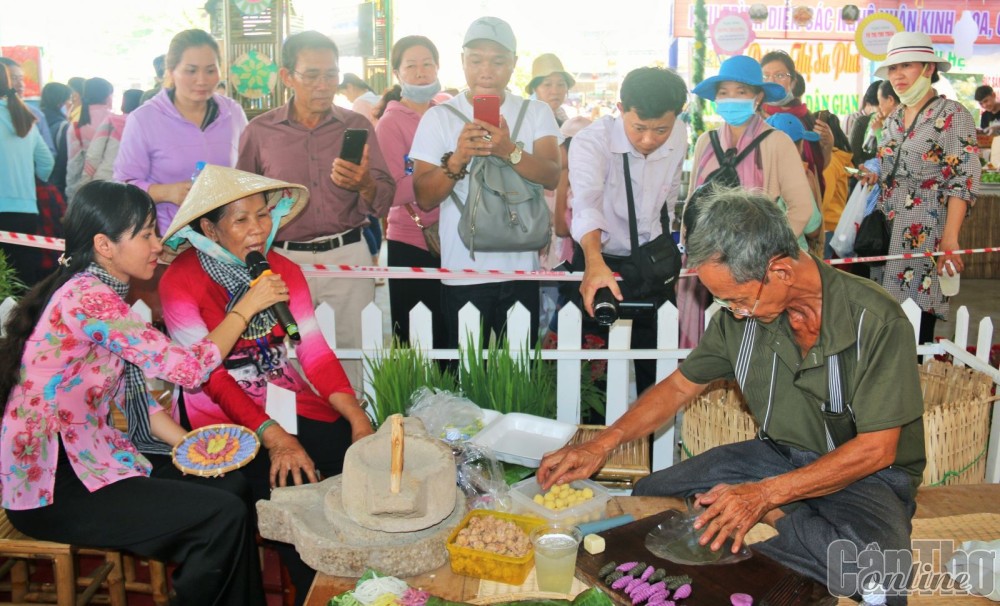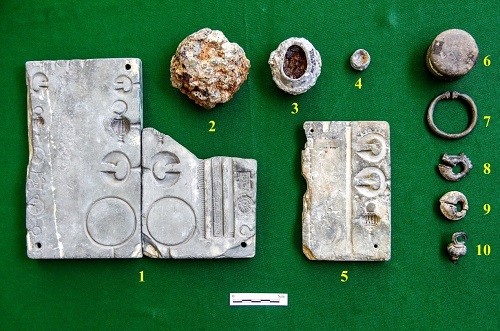
Geographically, there are a number of notable places in here: Đá Nổi Swamp, Cột Cầu Headland, Bàu Nhỏ Canal, Đầu Sọ Headland. The names: swamp, headland… show that this place is a low terrain with flooded water linking small canals: Sung Canal, Khai Ditch to Cần Thơ River.
Nhơn Thành Relic was especially noticeable in 1990 when flocks of people in the area flocked here for “gold hunting”. In 1991, the former Hậu Giang authorities started fieldwork, exploration, and excavation on an area of about 500 square meters. Initial results aroused much interest among archaeologists throughout the country and facilitated continuous exploration and excavation in the following years.
In 2011, the city-level scientific research project "Researching, exploring and excavating Nhơn Thành archaeological site (Nhơn Nghĩa Commune, Phong Điền District, Cần Thơ City)" was conducted for 3 years from 2011 to 2013. From the excavation and excavation pits at Nhơn Thành relic, over 37,000 relics were collected. They were rich in categories: daily objects, jewelry, crafting tools, worshiping objects, worshiping statues ... made of different materials: wood, stone, terracotta, metal ...All of these reflect the economic, cultural, and social life of a residential center about 1,400-1,700 years ago.
Through this large-scale exploration and excavation, archaeologists have concluded that Nhơn Thành relic has 4 types of relics. They are residence, craft workshops, wharf sites, and religious architectural relics.
Particularly, residence ones have two types: residence on stilted houses and residence on reinforced land. They include pottery, earthenware, bones, animal teeth, traces of coal ash ... accumulated alongside or within the same range of distribution of wooden pillars on stilts, or on reinforced floors. Long and square wooden structures with key mortar structures, some with carved traces have also been unearthed. This shows that many of the stilt architectures are large-scale, with wooden bars connected by a system of mounts, mortars, latches with beautiful carvings and decoration.
Residence relics - craft workshops are clearly shown through relics related to the processing and manufacturing of jewelry in addition to those on daily life and permanent settlements in residential structures from light material. In particular, there are many traces of metal slag, cast pieces, square stone slabs, fragments of various types of crucibles, metal pouring cups ...
In particular, through Nhơn Thành mold set recognized as National Treasures in 2017, scientists also confirm that Nhơn Thành is a large jewelry processing center of the region.
Many wooden poles and wooden stairs are strong and allocated on the above swamps and headlands, showing that Nhơn Thành used to have a very large wharf. The discovered 5.4m-long, 0.53m-0.56m-wide canoe is the earliest and most intact dug-out one in Óc Eo Culture. This proves that this place used to be a great trade center by the waterway.
Regarding religious architectural relics, those found in Nhơn Thành are extremely rich and diverse in category. For example, the left hand of a wooden Buddha image found is twice as big as that of an adult (30.0cmx18.0cmx10.0cm). The hand in the upside-down position is tilted slightly inward, holding slightly openly during the sermon. The fingers are delicately and lively carved. Another is a Buddha statue on a wooden base, in a standing posture on a two-stage lotus pedestal, which is elaborately sculpted, with a gold-plated back. Nhơn Thành statue with the hip projected to the right is a very prominent feature, showing a strong influence from Indian visual arts. The statue was recognized as a National Treasure in 2018.
In 2019, the linga - yoni (two in one) artifact, symbolizing the traditional beliefs of the ancient Nhơn Thành people, made of wood was unique and recognized as a National Treasure

Linga-yoni wood recognized as a National Treasure in 2019 - Photo: BTCT
Óc Eo Nhơn Thành Cultural Archaeological Relic with special historical, cultural, and scientific value was recognized as a city-level relic on October 20th, 2014, and was proposed for recognition as the National level relic. Four of the excavated artifacts are recognized as National Treasures.
In order to conserve and promote the value of the relics, it is necessary to soon plan to delineate the protection core, restore excavation pits in the years 2011-2013, build exhibiting houses ... In addition, it is possible to restore and reproduce all kinds of ancient residence relics of Nhơn Thành people over 1,400 years ago as a tourist center of cultural heritage in Cần Thơ City./.
References:
1. Bùi Chí Hoàng (2018), " Khảo cổ học Nam bộ thời sơ sử (Archeology of Southern Vietnam in early history)", Social Science Publishing House, Hà Nội.
2. Coedes Georges (2008), " Lịch sử cổ đại các quốc gia Ấn Độ hóa ở Viễn Đông (Ancient history of Indianized countries in the Far East)", Thế Giới Publishing House, Hanoi.
3. Đào Linh Côn (2008), " Văn hóa Óc Eo và vương quốc Phù Nam (Oc Eo culture and Funan Kingdom)", The Gioi Publishing House, Hanoi.
Source: Tourismcantho.vn - Translated by Diep Truong





